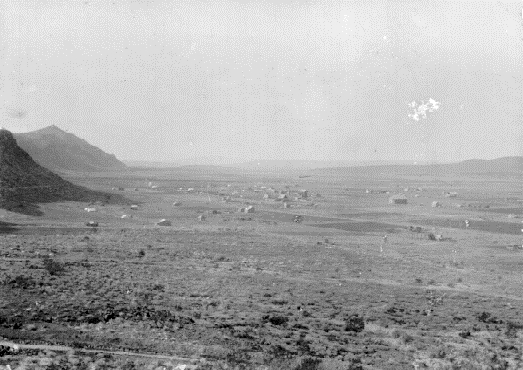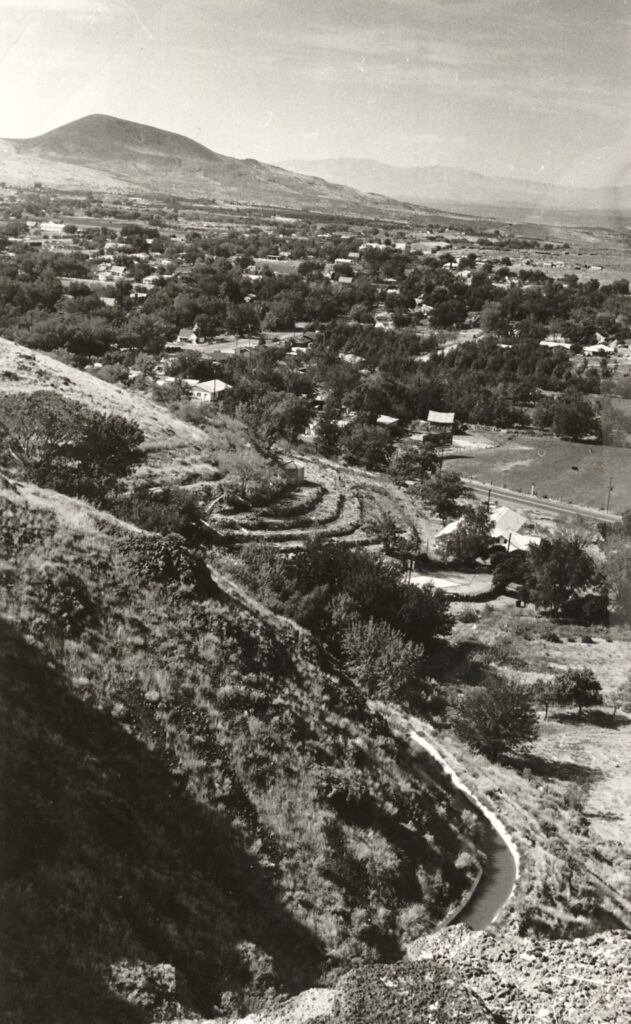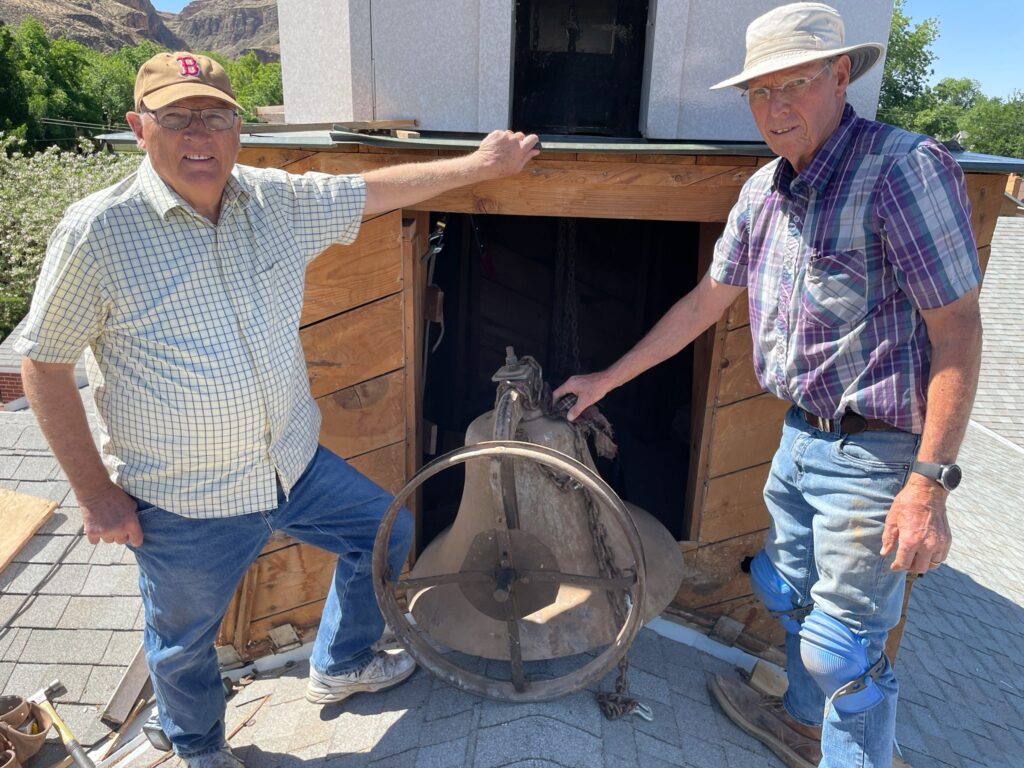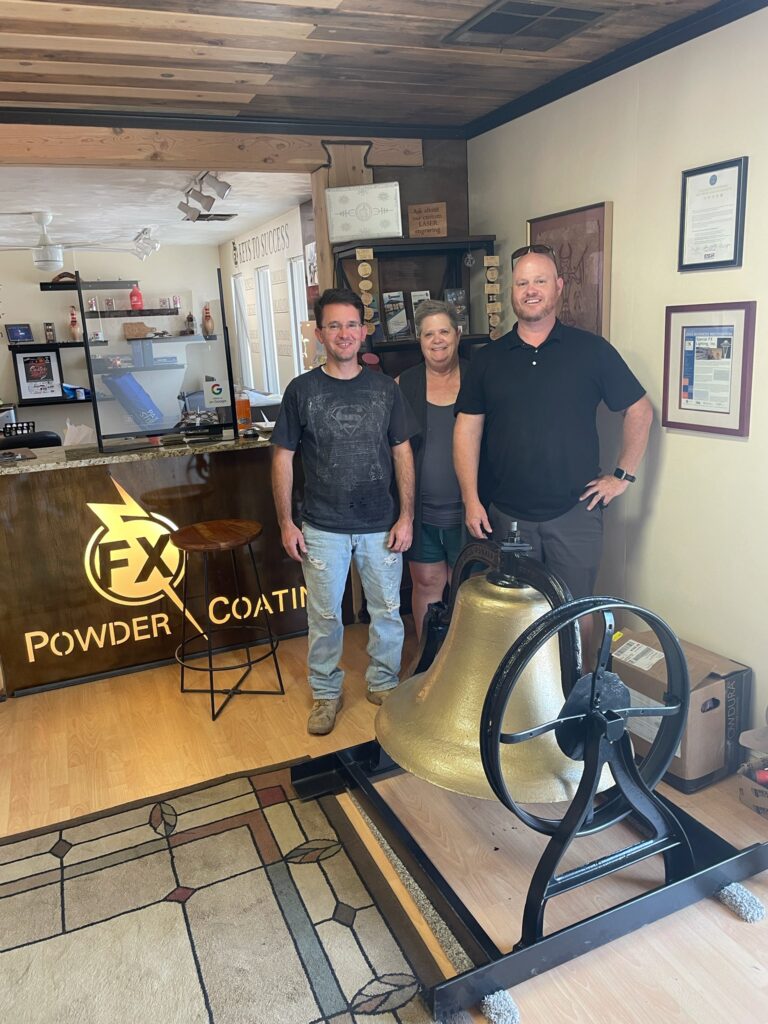
FEATURE — Humongous tropical storms will never make landfall in Southern Utah, yet one of its cities bears the name Hurricane.
Legend has it that Erastus Snow, an early apostle of the Church of Jesus Christ of Latter-day Saints, was riding his buggy in the area on a particularly windy day in the 1860s and a whirlwind blew off the top.
“Well, that was a Hurricane,” Snow reportedly said. “We’ll name this the Hurricane Hill.”
The nearby mesa and fault took the same name. When the town was settled, it took the name, too, after monikers such as Chaparral City and Pearl City were rejected.
Just as curious as to why a town in the desert would have such a name is the prevailing pronunciation of the town. Local residents pronounce it “Her-ah-kun,” which the story goes was the British pronunciation at the time, particularly those from Liverpool.
Locals have fun correcting visitors on the proper way to pronounce their hometown’s name. The local bike shop, Over The Edge, has taken it even a step further, selling merchandise with “Hurkin” emblazoned on it.
Its name aside, Hurricane boasts a unique, faith-promoting foundation story. The settlement of the town was not possible until construction finished on the Hurricane Canal. It took 11 years to build and was a co-op enterprise that utilized no public funding but was solely grounded in hard work and determination. The canal’s story is detailed in another article in the Days Series.
This story will focus on what happened immediately after its construction.

First settlers
Water reached the Hurricane Bench via the Hurricane Canal on August 6, 1904, but it took approximately two more years until the town was settled because there was still more work to do on the canal — an extension of it all the way around town to what has been known as the south fields, wrote Verdell Hinton in a short history entitled “The Building of the Hurricane Canal and the Early Settlement of Hurricane, Utah.” Would-be settlers had to dig distribution ditches to get water to future farms and town lots so gardens could be grown. Early on, each garden had a water turn twice a week and a similar system was devised for farms with a water turn every 12 to 14 days, Hinton wrote.
By the end of 1906, 11 families had arrived to stay. The first family to settle in Hurricane, in March 1906, were Thomas Maurice (known as Maurice) and Wilhelmina Hinton with their three small children. At first, they lived in a tent until they built a small home that would eventually be the residence of Thomas and Annie Hinton Isom, Maurice’s sister and brother-in-law, whose move to Hurricane was delayed by sickness. The Hintons lived in the home for a few months while building a similar home for themselves. That home, moved from its original location and restored, now stands near the Wells Fargo Bank and holds the distinction as the oldest building standing in Hurricane.
Maurice was an accomplished carpenter and built many of the first homes, cabinets and furniture for early residents. Hinton donated his skills in building the first social hall, the Relief Society hall and the first elementary and high schools. Wilhelmina was a midwife with a “healing touch” who worked for meager pay, which often consisted of chickens and produce. She was also a correspondent for the Washington County News and documented the goings-on in Hurricane for quite a while.
A plaque near the first Hinton home remarks that the home shows how simple the life of Hurricane’s first settlers was and that they forged onward despite the many hardships and inconveniences they faced. The other nine families who came that first year were the Amos, Charles, Jacob and Nephi Workman families, as well as the Frank Ashton, Ira Bradshaw, Bernard Hinton, Anthony Jepson and Erastus Lee families.

The town square and bell
Hurricane’s pioneer settlers set apart a town square located on the southwest corner of State and Main streets at the city’s inception. First, it was home to a tree-lined bowery utilized for public functions and a multi-purpose building that was used as a social hall, church and school. A brick Relief Society Building went up in 1914 followed by a public school in 1918. The school housed elementary through high school students and the Relief Society was used as a school, church and seminary. The old white chapel, which served as the headquarters of the Zion Park Stake, and the library, which now houses the Hurricane Pioneer Museum, were added to the square in the late 1930s.
In 1907, Hurricane purchased a 30-inch bell cast by the American Bell and Foundry Company of Northville, Michigan. The bell first hung from a derrick near the bowery on the northeast corner of the town square, where the Heritage Park sits now, Lee Beatty wrote in this year’s Peach Days program.

“As most people had no watch or clock, the bell rang about 30 minutes before church or the start of school, or when a fire or some other disaster needed assistance,” Beatty noted.
When the Social Hall was constructed, the bell hung over the front door and remained there until the school building went up in 1918, where it was hung on top of the school just behind its front façade. School was held in the building until 1955, when Hurricane Elementary (now the community center) was built. When the Red Brick Church was built (300 South and 100 West) in the early 1950s, the bell was placed in its steeple.
The bell was retired in 1970 when multiple wards were created and only rung on special occasions, such as July 4, 1976, the nation’s bicentennial. For the last decade, the Hurricane Valley Chapter of the Sons of Utah Pioneers, as well as the Hurricane Preservation Commission and the LDS Church, have worked to return the bell to its original location.
On May 21, 2021, members of the Sons of Utah Pioneers removed the bell from the Red Brick Church. The staff of FX Industries in Hurricane donated its time and expertise to restore the bell, sandblasting and powder coating it to a new-looking sheen. The bell will be on display at the community center during Peach Days and will be installed in a new bell tower in the old town square later this year.
Sheep shearing
One major economic enterprise in Hurricane’s early days was sheep shearing at the old Gould’s sheep shearing operation located just over the hill east of town.
“This became, as some claimed, the busiest shearing center in the West, if not the world,” Verdell Hinton wrote in his short history. “Beginning in 1910, Southern Utah sheepmen opened corrals that soon attracted herds from the entire region, including Cedar City, Panguitch, Kanab, Kanarra and Long Valley towns.”
Hinton said they averaged approximately 3,000 sheep per day and between 1910 and 1930, up to 150,000 sheep were sheared in the corral each year.
The shearing operation provided work for many residents and increased the revenue of local shops and businesses. Some townspeople supplemented their incomes by hauling wool to the railhead at Lund during the spring.
Tension between sheepherders and cattlemen as well as the dawning of the Great Depression put an end to the shearing operation.

Fruit-growing past and Peach Days
As soon as the canal’s water reached the Hurricane Bench, settlers planted fruit trees, chief among them peaches. Frank Barber, an experienced nurseryman from Centerville, came to Hurricane in January 1907 and planted peach trees that spring. The valley’s newly formed commercial club planted several thousand Elberta peach trees in 1908.
“Fruit farming soon became the chief source of a family’s income,” wrote Hinton. “Peaches became the most famous crop grown and provided the greatest source of income, though it was not constant because of killing frosts and poor prices.”
Barber organized the Hurricane Nursery Company, which later became the Dixie Fruit and Produce Company. Hinton wrote that it was Barber who is credited with “creating a statewide reputation for Dixie Fruit.”
While many were skeptical that fruit could arrive in Salt Lake City in good enough condition to sell, Barber believed it was possible and was willing to try it. Fruit had to travel 60 miles via wagon to the nearest railhead at Lund and then onto Salt Lake City by train. Barber wrapped each fruit individually and placed them in crates and said it filled his heart with joy when he opened the crates.
“Those great big, red peaches just shone there and the customers started to grab them and grab them and grab them,” Hinton quoted Barber as saying. “My peaches arrived in better condition than most of the California fruit shipped in refrigerator cars.”
The news of the Hurricane fruit even made the Salt Lake papers, Hinton noted. Both the Salt Lake Tribune and Deseret News noted that the entire shipment was sold before noon at a higher price than California fruit and during the next 50 years, thousands of train carloads of Hurricane peaches made their way to market in the Wasatch Front.
Barber also left a lasting legacy when he organized the town’s first “Fruit Festival,” held at the social hall in 1909.
“The townspeople came and displayed the best fruits they had raised: Elberta peaches, grapes and melons,” the 2021 Peach Days program notes. “The produce was judged and then those attending the ‘Fruit Festival’ all helped eat the scrumptious display.”

The festival continued the next year with Hurricane residents and guests sharing a meal before viewing the fruit displays. The Washington County News gushed over the superior quality of the fruit, saying that “finer peaches were never seen anywhere.” A baseball game and dance on the town square rounded out the activities of that day.
The celebration at one time bore the name “Elberta Days” after the prevalent variety of peach, but in 1915 the name changed to Peach Days. The event continued to expand and by 1929, it featured livestock and poultry exhibits, agricultural and horticultural displays as well as a variety of entertainment. In 1951, Washington County commissioners asked Hurricane to morph its festival into the county fair because of its success. Centered at Hurricane Elementary and along 100 South, seed displays, home arts, and baked goods (displayed in the old high school gym) became part of the event as well as a carnival housed in various places over the years, including the elementary school playground and on the Hurricane High School football practice field. At one point, the fair included two parades: A children’s parade on Friday evening and a general parade on Saturday morning.
Due to the remodeling of the high school, the event was held for a few years at the new Hurricane Middle School, which felt much more congested according to the Peach Days program. The fair moved to the new fairgrounds built at the Washington County Regional Park in 1997.
Hurricane residents missed holding that small-town celebration held on the old town square so much that in 1999, thanks to the efforts of first board members David Stirland, Tom Hirschi, Jarolyn Stout and Vera Hirschi, the first iteration of the “new” Peach Days took place September 3-4, 1999 at Hurricane Elementary and the old HHS building across the street. The old HHS building was torn down in 2004 and when Hurricane Elementary moved to its new building on the north side of town in 2010, Hurricane purchased the old building and turned it into its community center. The landscape in the old town square has changed over the years, but the small-town celebration continues to adapt to its surroundings and is still going strong.
This year, Peach Days will be bigger than ever after missing last year due to the COVID-19 pandemic. It is being called “Peach Week” and will feature activities every day Monday-Saturday the week leading up to Labor Day Weekend, including a free David Archuleta Concert as well as golf, pickleball and corn hole tournaments in addition to its regular offerings at the old town square on Thursday, Friday and Saturday.
For more information on Hurricane history, visit the Hurricane Valley Heritage Park and Pioneer Museum, or the city’s history page. For more information on Peach Days, visit the Hurricane City web page.
Click on photo to enlarge it, then use your left-right arrow keys to cycle through the gallery.

This historic photo shows the Hurricane Valley just as settlement was starting, date unspecified | Photo courtesy of Washington County Historical Society, St. George News

This historic photo on a plaque near the Wells Fargo bank building shows a portrait of Thomas Maurice and Wilhelmina Hinton, the first settlers of Hurricane, Utah, Aug. 20, 2021 | Photo by Reuben Wadsworth, St. George News

This historic photo shows the old Hurricane Social Hall, which was the second "residence" of the Hurricane Bell, during its heyday, date unspecified | Photo courtesy of Washington County Historical Society, St. George News

This historic photo shows fruit packers in Hurricane in the 1930s, circa 1935 | Photo courtesy of Utah Education Network (UEN), St. George News

This historic photo shows the Hurricane Canal with water in it in the foreground with Hurricane in the background, date unspecified | Photo courtesy of Washington County Historical Society, St. George News

This plaque in the Hurricane Valley Heritage Park features renderings of three of the former buildings of the Hurricane Town Square, Oct. 19, 2020 | Photo by Reuben Wadsworth, St. George News

The small home that stands near the Wells Fargo bank in Hurricane was built by Hurricane's first family, Thomas Maurice and Wilhelmina Hinton. It is the oldest structure still standing in Hurricane, Utah, Aug. 20, 2021 | Photo by Reuben Wadsworth, St. George News

The Samuel and Elizabeth Isom home is a wonderful, restored example of the Victorian style homes Hurricane's first families built after they'd stayed a few years and had to resources to do so, Hurricane, Utah, Sept. 11, 2019 | Photo by Reuben Wadsworth, St. George News

David Isom (left) and Larry LeBaron (right), members of the Hurricane Valley Chapter of the Sons of Utah Pioneers, pose next to the old Hurricane bell the day it was removed from the steeple of the Old Red Brick Church, Hurricane, Utah, May 21, 2021 | Photo courtesy of David Isom, St. George News
About the series “Days”
“Days” is a series of stories about people and places, industry and history in and surrounding the region of southwestern Utah.
“I write stories to help residents of southwestern Utah enjoy the region’s history as much as its scenery,” St. George News contributor Reuben Wadsworth said.
To keep up on Wadsworth’s adventures, “like” his author Facebook page, follow his Instagram account or subscribe to his YouTube channel.
Wadsworth has also released a book compilation of many of the historical features written about Washington County as well as a second volume containing stories about other places in Southern Utah, Northern Arizona and Southern Nevada.
Read more: See all of the features in the “Days” series
Copyright St. George News, SaintGeorgeUtah.com LLC, 2021, all rights reserved.

